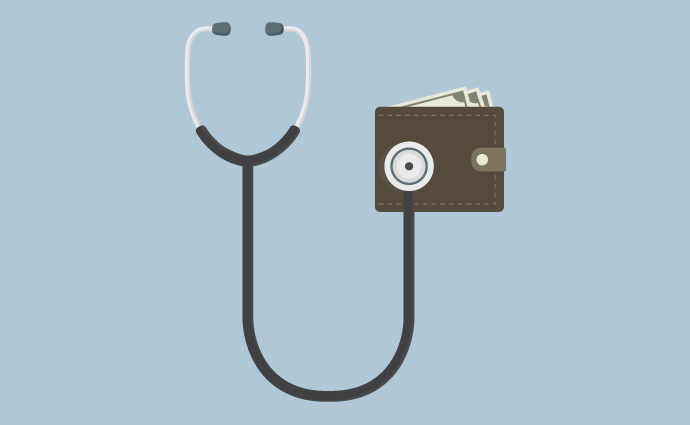Eliminating Indirect Billing for NPs, PAs Could Save Medicare $194M
Indirect billing makes it difficult to quantify and characterize the care nurse practitioners and physician assistants provide to patients at healthcare practices.

Source: Getty Images
- If healthcare practices eliminated indirect billing for nurse practitioner (NP) and physician assistant (PA) visits, it would have saved Medicare $194 million in 2018, according to a Health Affairs study sent to journalists.
The number of nurse practitioners and physician assistants in the healthcare industry is growing, but the amount and types of care they provide are largely unknown due to indirect billing.
Indirect billing occurs when visits provided by an NP or PA are billed by a supervising physician. In these cases, Medicare and private payers pay the practice the total cost of what they would pay a physician for the same service. Under the alternative, direct billing for NP and PA services, payers reimburse practices 85 percent of what they would pay a physician for the service.
When practices use indirect billing, a claim for a visit provided by an NP or PA is indistinguishable from a claim for an independent visit with the supervising physician.
Researchers gathered Medicare Part D claims data from 2010 to 2018 to determine the extent to which healthcare practices use indirect billing for NP and PA visits. By using Medicare Part D claims, researchers identified NP or PA involvement from written prescriptions that accompanied a visit.
Between 2010 and 2018, the number of NP- and PA-established office visits billed indirectly, with and without a prescription, increased from 10.9 million to 30.6 million.
The number of NP visits, billed directly and indirectly, rose from 6.5 million in 2010 to 19.9 million in 2018. Similarly, the number of PA visits, billed directly and indirectly, increased from 4.5 million to 10.6 million.
Although the number of visits billed indirectly increased over time, the share of total NP and PA visits that were indirectly billed declined. For example, the percentage of NP visits billed indirectly fell from 50.9 percent in 2010 to 35.6 percent in 2018. The share of PA visits billed indirectly decreased from 59.2 percent to 42 percent.
Spending on visits that were billed indirectly increased, going from $513 million in 2010 to $1,291 million in 2018. Spending for NP visits that used indirect billing rose from $295 million to $811 million, while spending for PA visits went from $218 million to $480 million.
If all indirectly billed NP and PA visits were directly billed in 2018, Medicare would have saved at least $194 million, the study found.
Nearly 70 percent of the healthcare practices in the study were indirect billing practices, meaning that more than 80 percent of their NP and PA visits were billed indirectly. Twenty percent of practices were direct billing practices and 11 percent were both direct and indirect billing practices.
Researchers noted that it is unclear what factors help practices decide whether to bill NP and PA visits indirectly or directly. Organizations may weigh the increase in revenue against the administrative costs for indirect billing, but further research is needed.
Indirect billing practices were more likely to have fewer physicians, fewer NPs and PAs, served smaller percentages of rural patients, and were more likely to be primary care practices. If indirect billing was eliminated, smaller primary care practices would experience more significant financial repercussions than other practices, researchers indicated.
Indirect billing was also more common in states with restricted scope-of-practice laws for NPs.
Researchers said that the study findings should inform the ongoing debate about eliminating indirect billing. The substantial Medicare savings could help lower out-of-pocket costs and remove the physician oversight requirement in state NP scope-of-practice laws. Eliminating indirect billing could also encourage more independent practice among NPs and PAs.
However, not all industry leaders support expanded NP scope of practice. For example, the American Medical Association (AMA) maintains that scope-of-practice expansions can threaten patient safety. The organization said that while nurse practitioners play a critical role in care delivery, their skills are not interchangeable with fully trained physicians who can offer the highest value of care.
Universal direct billing would result in lower reimbursement rates for NPs and PAs, but healthcare stakeholders have called for equal reimbursement for NPs, PAs, and physicians.
“This strategy would obviously not result in savings to the Medicare program, but it would likely eliminate the practice of indirect billing, as there would be no financial incentive to use it,” the study concluded. “Further, it may result in improved practice efficiency, as practices would no longer have to ensure that they were meeting the regulatory requirements of indirect billing.”
